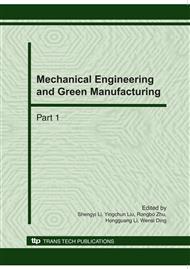p.1757
p.1761
p.1765
p.1770
p.1775
p.1780
p.1784
p.1788
p.1794
Study on Additional Electrical Current on Machinability of Free-Machining Steels in Turning
Abstract:
This paper deals with the mach inability of BN free-machining steel in turning with a supplied current of various values and different directions of electrical current. The tested work pieces were, standard steel AISI 1045 and BN added steel (AISI 1045-BN) based AISI 1045 which has good mach inability at high cutting speed. Turning tests were performed by carbide tool P30 and the power source for additional electrical current supply was a direct current source and the maximum electrical current in the circuit was 20milliamperes (mA). To investigate the influence of electrical conditions of closed circuit system on the cutting mechanism of AISI 1045-BN. The tool life, cutting force, and others were determined experimentally. The testing results show that when turning with carbide tool P30 the maximum crater depth in the tool was reduced drastically when the value of supplied current reached 5mA, regardless of its direction of flow, compared with depths at lower current values; the additional electrical current cutting showed smaller cutting force than those of conditions when turning AISI 1045-BN.
Info:
Periodical:
Pages:
1775-1779
Citation:
Online since:
October 2010
Authors:
Price:
Сopyright:
© 2010 Trans Tech Publications Ltd. All Rights Reserved
Share:
Citation:


